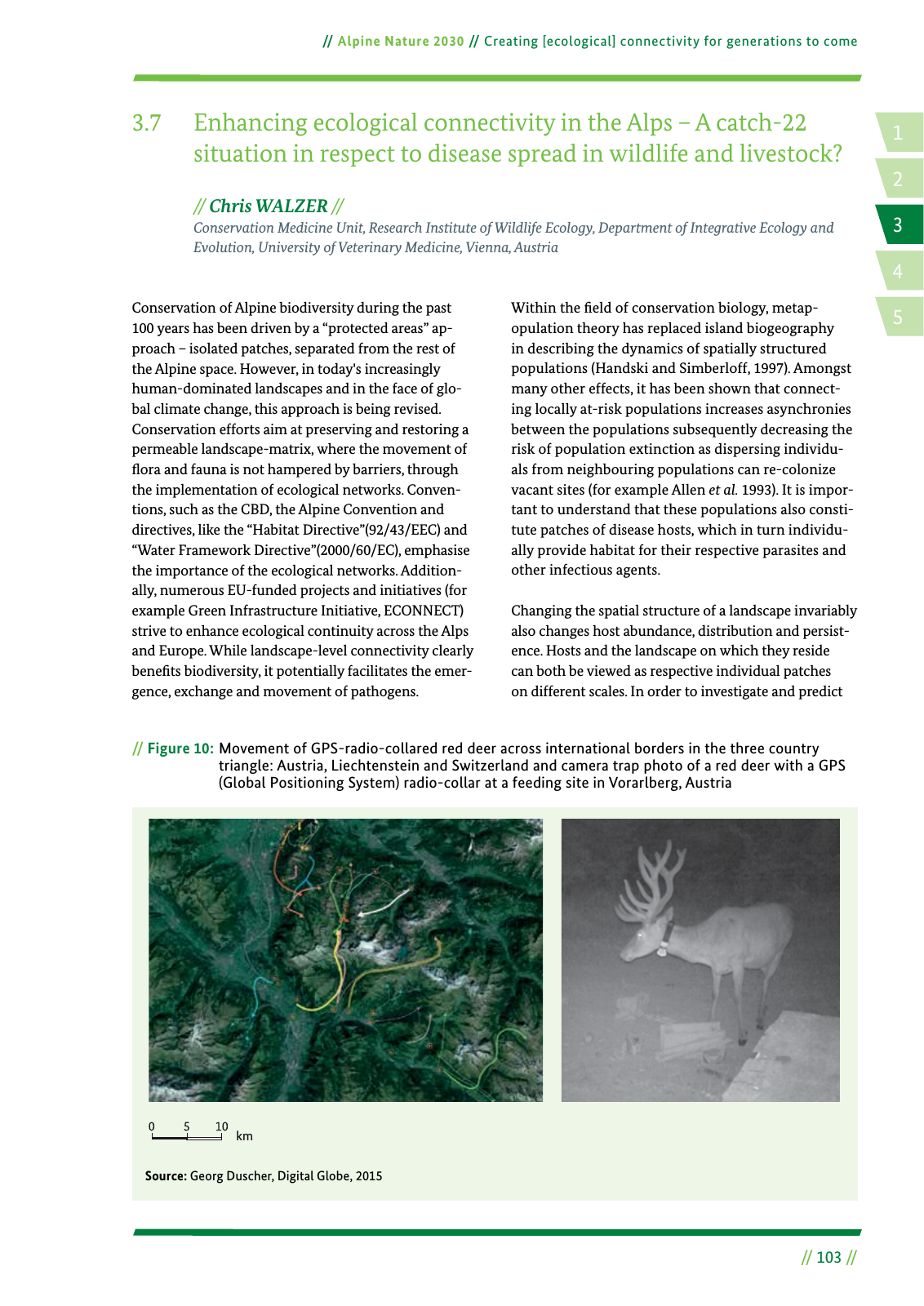14 2 5 3 Alpine Nature 2030 Creating ecological connectivity for generations to come 103 3 7 Enhancing ecological connectivity in the Alps A catch 22 situation in respect to disease spread in wildlife and livestock Chris WALZER Conservation Medicine Unit Research Institute of Wildlife Ecology Department of Integrative Ecology and Evolution University of Veterinary Medicine Vienna Austria Conservation of Alpine biodiversity during the past 100 years has been driven by a protected areas ap proach isolated patches separated from the rest of the Alpine space However in today s increasingly human dominated landscapes and in the face of glo bal climate change this approach is being revised Conservation efforts aim at preserving and restoring a permeable landscape matrix where the movement of ora and fauna is not hampered by barriers through the implementation of ecological networks Conven tions such as the CBD the Alpine Convention and directives like the Habitat Directive 92 43 EEC and Water Framework Directive 2000 60 EC emphasise the importance of the ecological networks Addition ally numerous EU funded projects and initiatives for example Green Infrastructure Initiative ECONNECT strive to enhance ecological continuity across the Alps and Europe While landscape level connectivity clearly bene ts biodiversity it potentially facilitates the emer gence exchange and movement of pathogens Within the eld of conservation biology metap opulation theory has replaced island biogeography in describing the dynamics of spatially structured populations Handski and Simberloff 1997 Amongst many other effects it has been shown that connect ing locally at risk populations increases asynchronies between the populations subsequently decreasing the risk of population extinction as dispersing individu als from neighbouring populations can re colonize vacant sites for example Allen et al 1993 It is impor tant to understand that these populations also consti tute patches of disease hosts which in turn individu ally provide habitat for their respective parasites and other infectious agents Changing the spatial structure of a landscape invariably also changes host abundance distribution and persist ence Hosts and the landscape on which they reside can both be viewed as respective individual patches on different scales In order to investigate and predict Figure 10 Movement of GPS radio collared red deer across international borders in the three country triangle Austria Liechtenstein and Switzerland and camera trap photo of a red deer with a GPS Global Positioning System radio collar at a feeding site in Vorarlberg Austria Source Georg Duscher Digital Globe 2015 km

Hinweis: Dies ist eine maschinenlesbare No-Flash Ansicht.
Klicken Sie hier um zur Online-Version zu gelangen.
Klicken Sie hier um zur Online-Version zu gelangen.